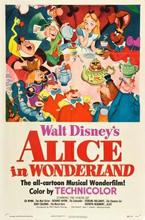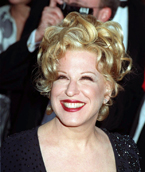Alice at 150: Everything You Never Knew About Wonderland
by Tom Burns
This year marks the 150th anniversary of the first publication of Lewis Carroll’s Alice’s Adventures in Wonderland, easily one of the most famous and beloved children’s books of all time. Even if you’ve never read the book yourself — and, if not, you really should — you probably already know at least something about Alice. Maybe you’ve seen the movies, read the adaptations, listened to a Jefferson Airplane song, or have friends whom you affectionately refer to as Tweedledee or Tweedledum.
Alice’s Adventures in Wonderland is a bona fide cultural institution, but just because you know what happens when you “Eat Me” or “Drink Me,” that doesn’t mean that you know everything there is to know about Wonderland. So, in honor of the book’s sesquicentennial, here are twelve interesting items you may not have known about Lewis Carroll’s most famous work.

1. Let’s start with the obvious. Lewis Carroll’s real name was Reverend Charles Lutwidge Dodgson, who, at the time Alice’s Adventures in Wonderland was first published, was a deacon and lecturer at Christ Church in Oxford, England. Dodgson first used the pseudonym “Lewis Carroll” when he published a poem titled “The Train” in 1856.
2. Carroll came up with the idea for Alice during a boat ride on July 4, 1862. He concocted the story off the top of his head to amuse Alice Liddell, the young daughter of the dean of Christ Church.
3. In a July 10, 1864 letter to his friend Tom Taylor, Carroll proposed several potential — yet ultimately rejected — titles for his in-progress book, including “Alice Among the Elves,” “Alice Among the Goblins,” and “Alice’s Doings in Elf-Land.”
4. Rumor has it that Carroll intended the character  of the Mad Hatter to be a grotesque caricature of a man named Theophilus Carter, the owner of an Oxford furniture shop whom Carroll disliked. (That said, there isn’t any evidence that Alice’s illustrator John Tenniel had any idea what Carter looked like.)
of the Mad Hatter to be a grotesque caricature of a man named Theophilus Carter, the owner of an Oxford furniture shop whom Carroll disliked. (That said, there isn’t any evidence that Alice’s illustrator John Tenniel had any idea what Carter looked like.)
5. After Carroll released Alice’s Adventures in Wonderland in 1865, the next book he published was NOT Through the Looking-Glass. (That didn’t come until 1872.) Instead, he followed up Alice two years later with the thrillingly titled, perhaps not-exactly kid-friendly An Elementary Treatise on Determinants, with Their Application to Simultaneous Linear Equations and Algebraical Geometry.

6. Strange, but true — Walt Disney hired Brave New World author Aldous Huxley to write a draft of the script that would eventually become Disney’s iconic 1951 animated version of Alice in Wonderland.
7. On December 9th, 1998 — 100 years after Carroll’s death in 1898 — a rare first edition of Alice’s Adventures in Wonderland sold at auction for $1.54 million, the highest price ever paid for a children’s book at the time.

8. Famed surrealist artist Salvador Dalí illustrated a rare edition of Alice’s Adventures in Wonderland in 1969 and, yes, it is as beautiful and strange as you’re imagining. Original copies of the Dali edition of Alice have sold for over $13,000.

9. The Divine Miss M. herself, Bette Midler, told the NEA that Carroll’s Alice’s Adventures in Wonderland was her favorite book.
10. There have been at least 35 live-action and animated films that were either adapted or inspired by Alice, and that’s not including next year’s “Alice Through the Looking Glass,” a sequel to Tim Burton’s 2010 film “Alice in Wonderland,” which will see Johnny Depp returning in the role of the Mad Hatter.
 11. The iconic spinning tea cups ride at Disney World (also known as the Mad Tea Party) is inspired by the Disney animated version of Alice — the Dormouse pops out of a teapot in the center of the ride and the surrounding area features several Alice-themed topiaries.
11. The iconic spinning tea cups ride at Disney World (also known as the Mad Tea Party) is inspired by the Disney animated version of Alice — the Dormouse pops out of a teapot in the center of the ride and the surrounding area features several Alice-themed topiaries.
12. In honor of Alice’s 150th anniversary, this year, The Public Domain Review and Medium have teamed up to create an interactive “online annotated edition” of Alice’s Adventures in Wonderland. A team of Carroll scholars is freshly annotating each chapter — chapters that feature new artwork and “remixed” illustrations from public domain editions of the book. You can see their remixed Alice here.
